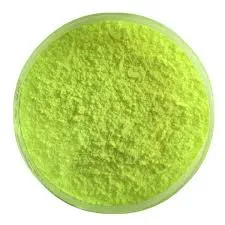Chemicals Used in Reverse Osmosis (RO) Plants
Reverse Osmosis (RO) is a widely employed water purification technology that effectively removes impurities from water, making it safe for various uses, including drinking, industrial applications, and wastewater treatment. The efficiency of an RO system largely depends not only on the membranes used but also on the various chemicals involved in the process. This article will explore the key chemicals utilized in RO plants, their purposes, and their importance in ensuring the optimal functioning of the system.
1. Antiscalants
One of the most critical challenges in RO plants is scaling, which refers to the accumulation of mineral deposits on the membrane surfaces. Minerals such as calcium carbonate, barium sulfate, and silica can precipitate and form hard scale, severely diminishing the efficiency of the membranes. To combat this, antiscalants are used. These chemicals, including polyacrylic acids and phosphonates, work by binding with the ions that cause scaling, thus preventing their precipitation on membranes. The use of antiscalants not only extends the lifespan of the membranes but also reduces the frequency of cleaning and maintenance required for the RO system.
2. Acid Cleaners
Over time, organic and inorganic fouling can occur on RO membranes, necessitating cleaning. Acid cleaners, typically sulfuric acid or hydrochloric acid, are effective in dissolving scale deposits, particularly those composed of calcium and magnesium. The cleaning process usually involves circulating the acid solution through the system for a specified duration, effectively restoring membrane permeability and performance. However, careful handling and dilution of these acids are paramount to avoid damaging the membrane.
In addition to acid cleaners, alkaline cleaners are often used in RO plants to remove organic fouling, biofilms, and some types of inorganic deposits. These cleaners, which may include sodium hydroxide and sodium carbonate, help to break down organic materials and emulsify fats and oils that can accumulate on the membranes. The use of both acid and alkaline cleaners in a systematic cleaning regime can significantly enhance the cleanliness and durability of the RO membranes.
what are the chemicals used in ro plant

4. Biocides
Microbial growth is another concern in RO systems, as biofouling can lead to membrane degradation and decreased efficiency. Biocides, such as chlorine, bromine, and quaternary ammonium compounds, are employed to control and prevent the growth of bacteria, algae, and other microorganisms. While effective, the use of chlorine must be managed carefully since it can degrade certain types of RO membranes, particularly polyamide membranes. Therefore, non-oxidizing biocides are often preferred for maintaining membrane integrity.
5. pH Adjusters
The pH of the feed water is crucial in ensuring the effectiveness of antiscalants and the operational stability of RO membranes. pH adjusters, such as citric acid or sodium hydroxide, are used to maintain optimal conditions for the performance of these chemicals. Adjusting the pH not only helps in minimizing scaling but also enhances the solubility of various minerals, thereby facilitating better water flow through the membranes.
6. Flocculants and Coagulants
In some RO applications, especially those involving wastewater treatment or surface water, flocculants and coagulants are used prior to the RO process. These chemicals help in aggregating suspended solids, making it easier to remove them through pre-treatment processes like sedimentation or flotation. Commonly used coagulants include aluminum sulfate and ferric chloride, while flocculants may consist of polyacrylamide or chitosan.
Conclusion
The chemicals used in RO plants play a vital role in enhancing the efficiency and longevity of the system. By selecting the appropriate chemicals and implementing effective maintenance protocols, RO operators can ensure a consistent supply of purified water while minimizing operational costs. As technology continues to evolve, the development of more efficient and environmentally friendly chemicals for use in RO systems remains an essential focus for researchers and practitioners in the field of water treatment. Understanding these chemicals and their applications allows for improved management of water resources, vital in today’s water-scarce environment.

